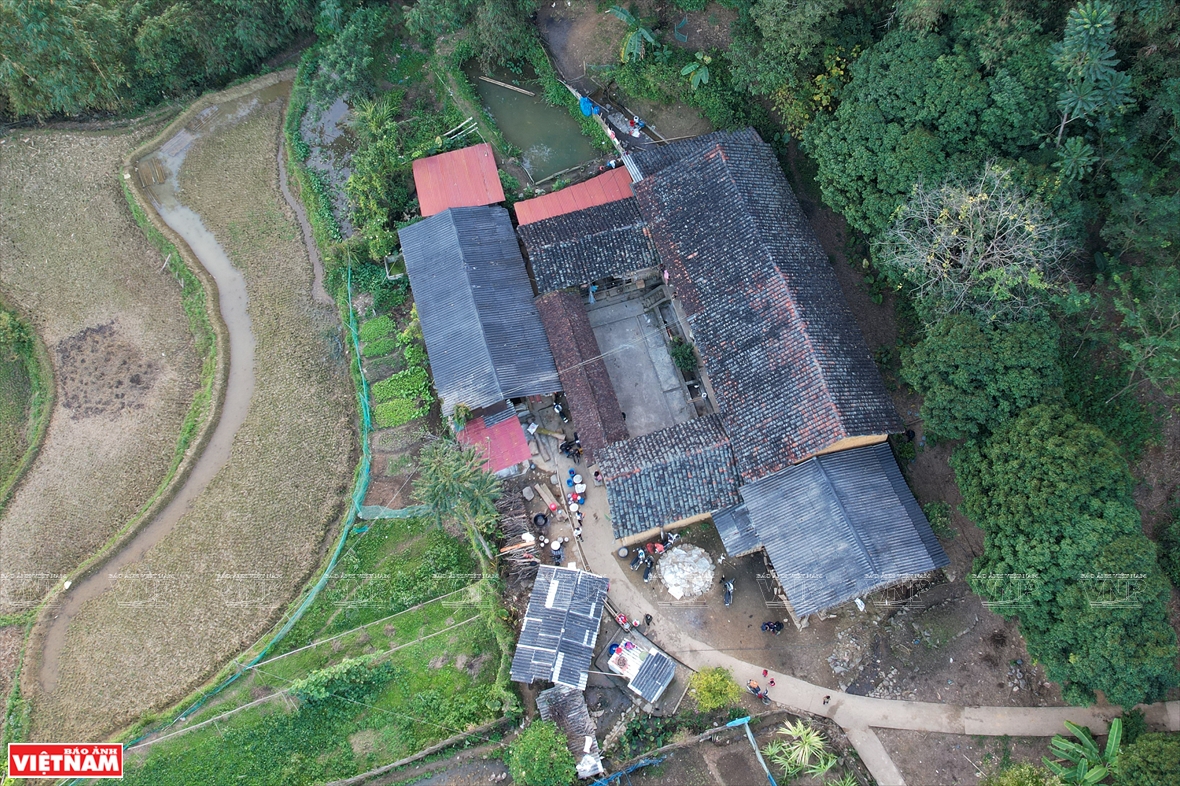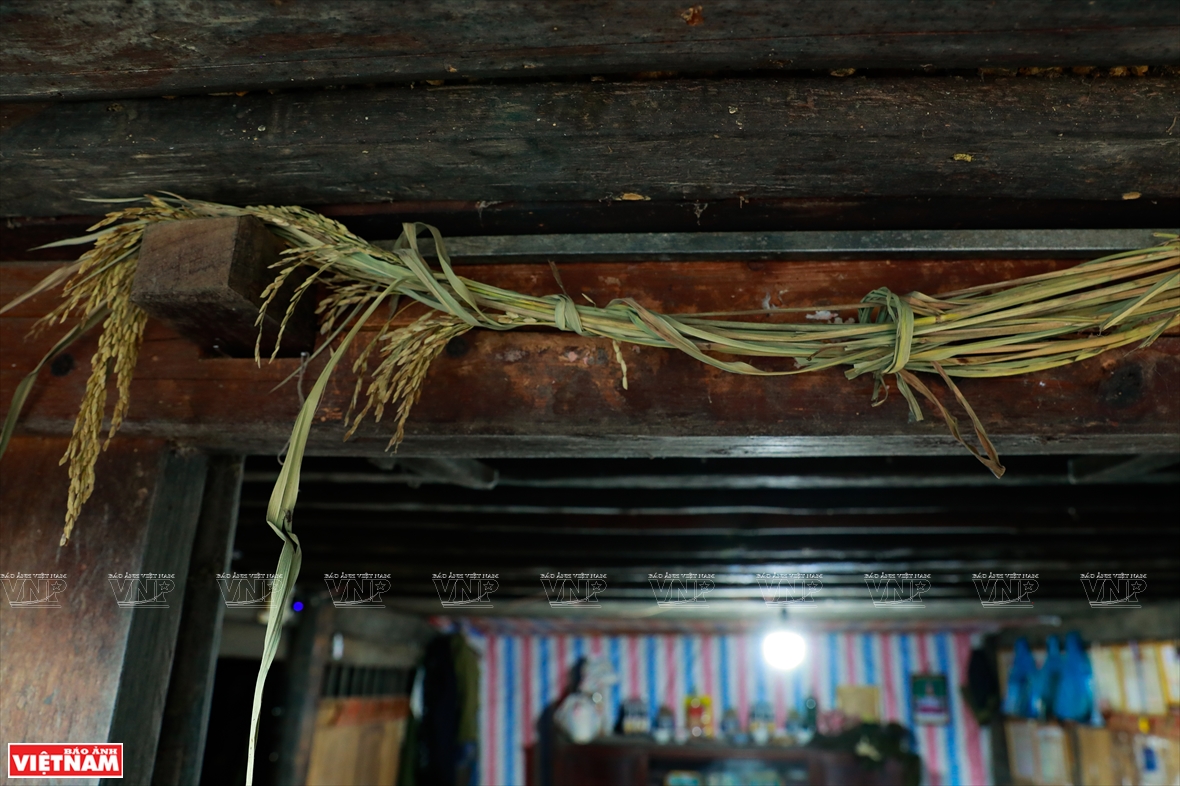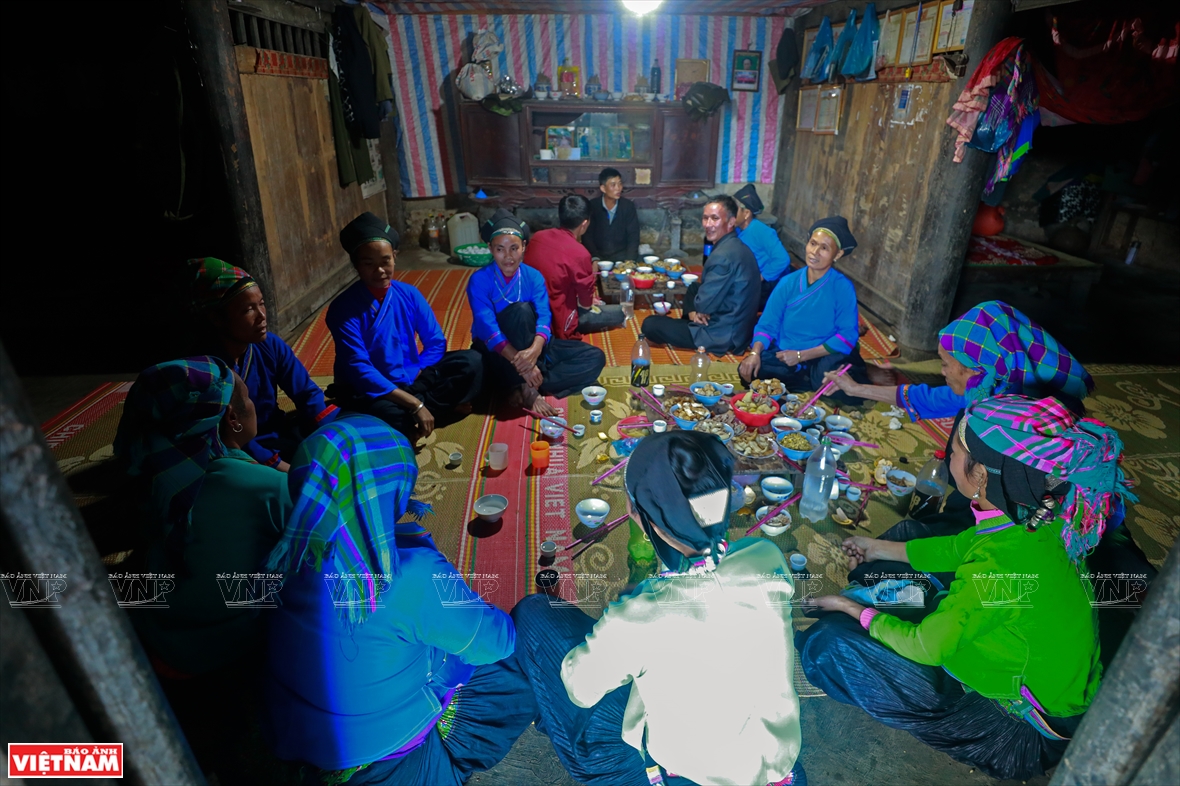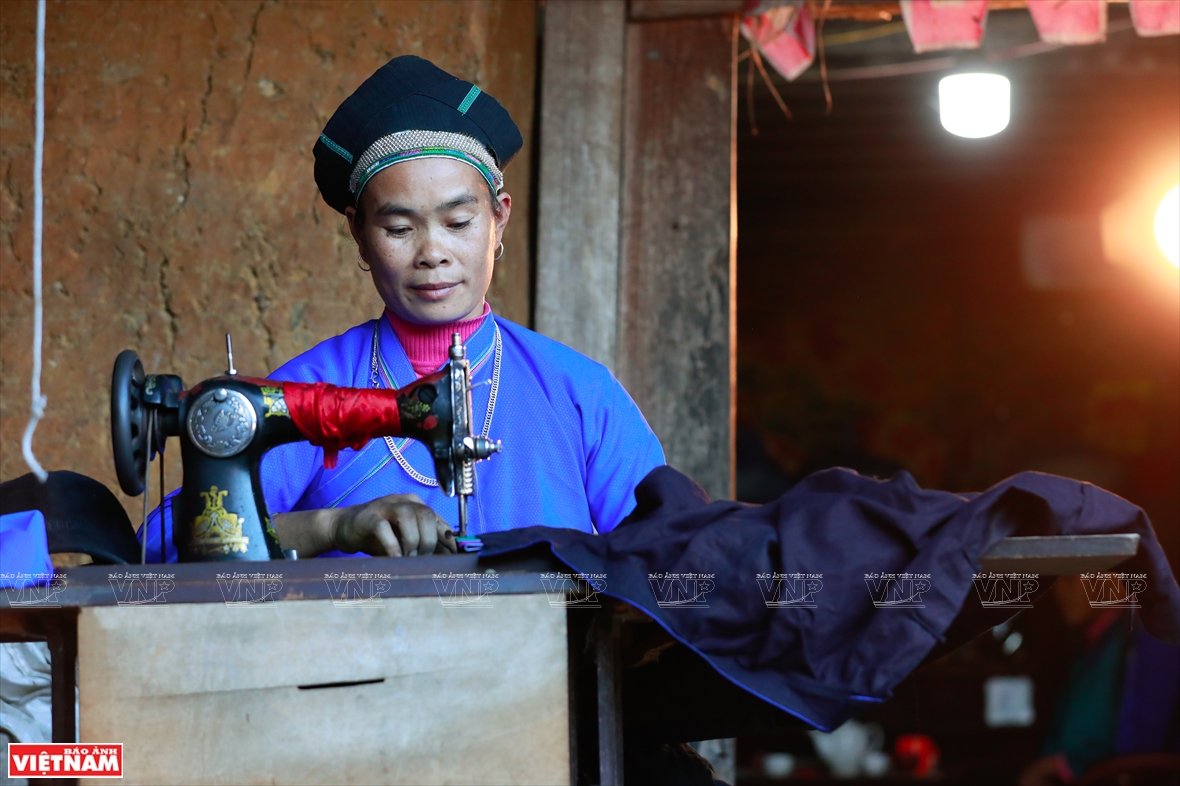In Nan Ma commune, Xin Man district, Ha Giang province, there is a 300-year-old house that looks like a “fortress” which is different than the usual houses of the Nung people living in the locality.
Three km from the center of Nan Ma commune, the majestic house was built in the style of a fortress which, at the back, blends into the mountain. It faces to the south and overlooks a valley with winding terraced fields. The house has many of the same characteristics as the original houses with a simple beauty using traditional materials of the local ethnic people. The old mud walls have been imprinted with the colors of time.

The house seen from above.
 The big sunlit yard is a playground for children. 
In the window of the living room, the host hangs branches of rice that are sacred rice branches during the seasonal praying ceremony.
|
The house has been home to many generations of the Ly family, so it is well preserved. Currently, two families of two Ly brothers live in this house. The scale and magnificence of the house is evidence of the wealth and power of their ancestors.

Imprints of time on a pillar of the house. The house is roofed with yin and yang tiles. 
The living room where the Nung hold parties and sing Sli melodies.
|
Covering several square meters, the complex includes three main blocks of houses which are surrounded by half meter-thick mud walls, forming a solid "fortress". On the walls there are still traces of defensive holes. The Nung people built in this style to prevent invaders and robbers from gaining access.

Generations of the Ly family are in their traditional clothing which are hand made. 
Women of the Ly family sewing traditional dress of the Nung people. 
Patterns carved on a window in the living room. |
The floor of the house is made from green stones which were arranged closely together to create a firm platform for the frame of the house. All the pillars and rims are made from iron wood. Many patterns carved in the wood and stone are still very clear. Although the rooms of the house have been changed in function from the original, the overall house is still quite intact.
Visiting the house, visitors will enter a typical living space of the traditional Nung family. In the window of the living room, the host hangs branches of rice that are sacred rice branches during the seasonal praying ceremony which is the most important festival of the Nung people. In a room near the kitchen, there are tools for weaving and dying brocade cloth. The women of the family plant trees daily, weave and make their traditional costumes.
On festival days, visitors will be invited to join parties with the host family. On these occasions, the melodies of their traditional folk singing of Sli will entertain visitors in the old living space.
By Viet Cuong Translated by Nguyen Tuoi